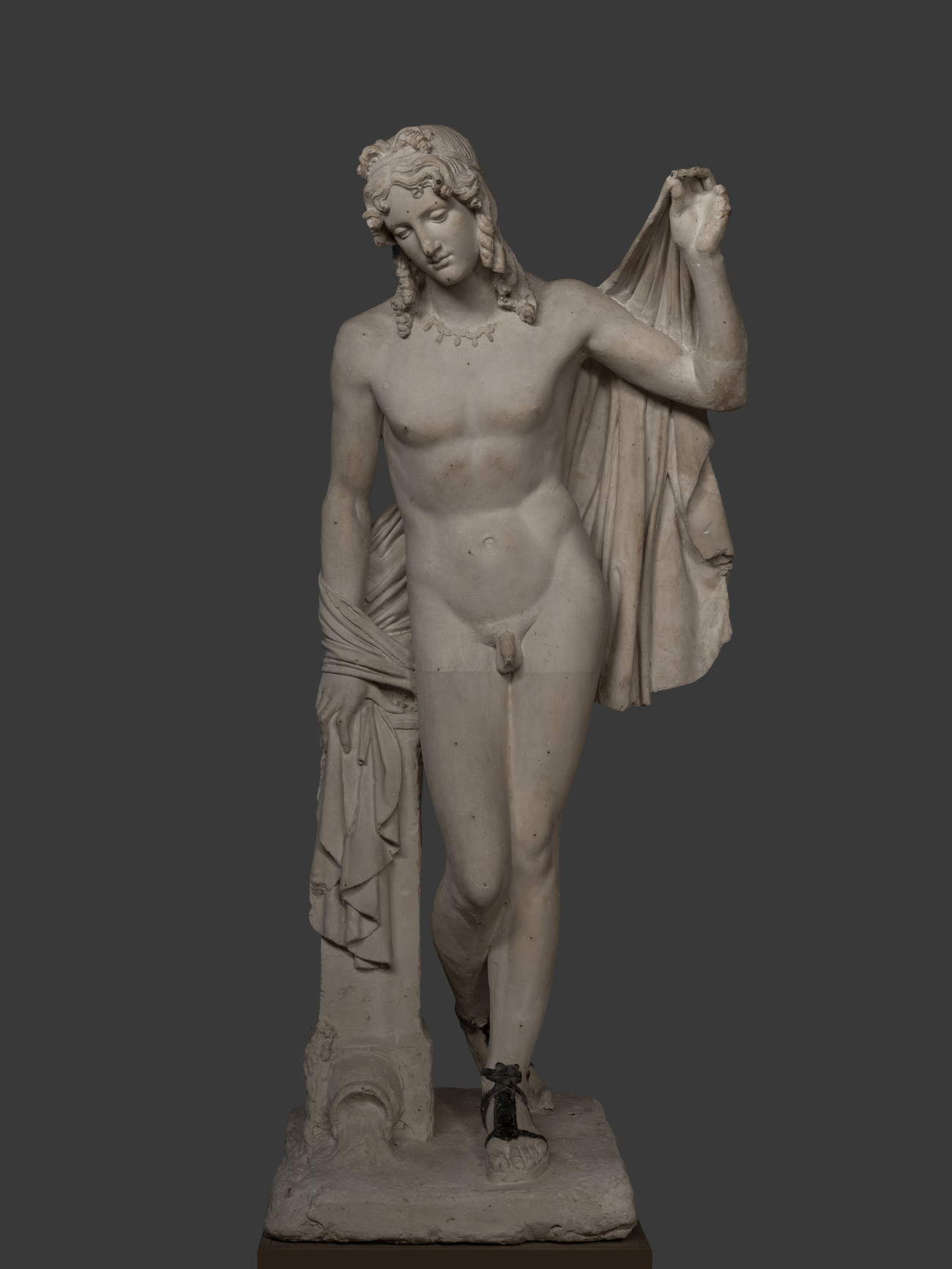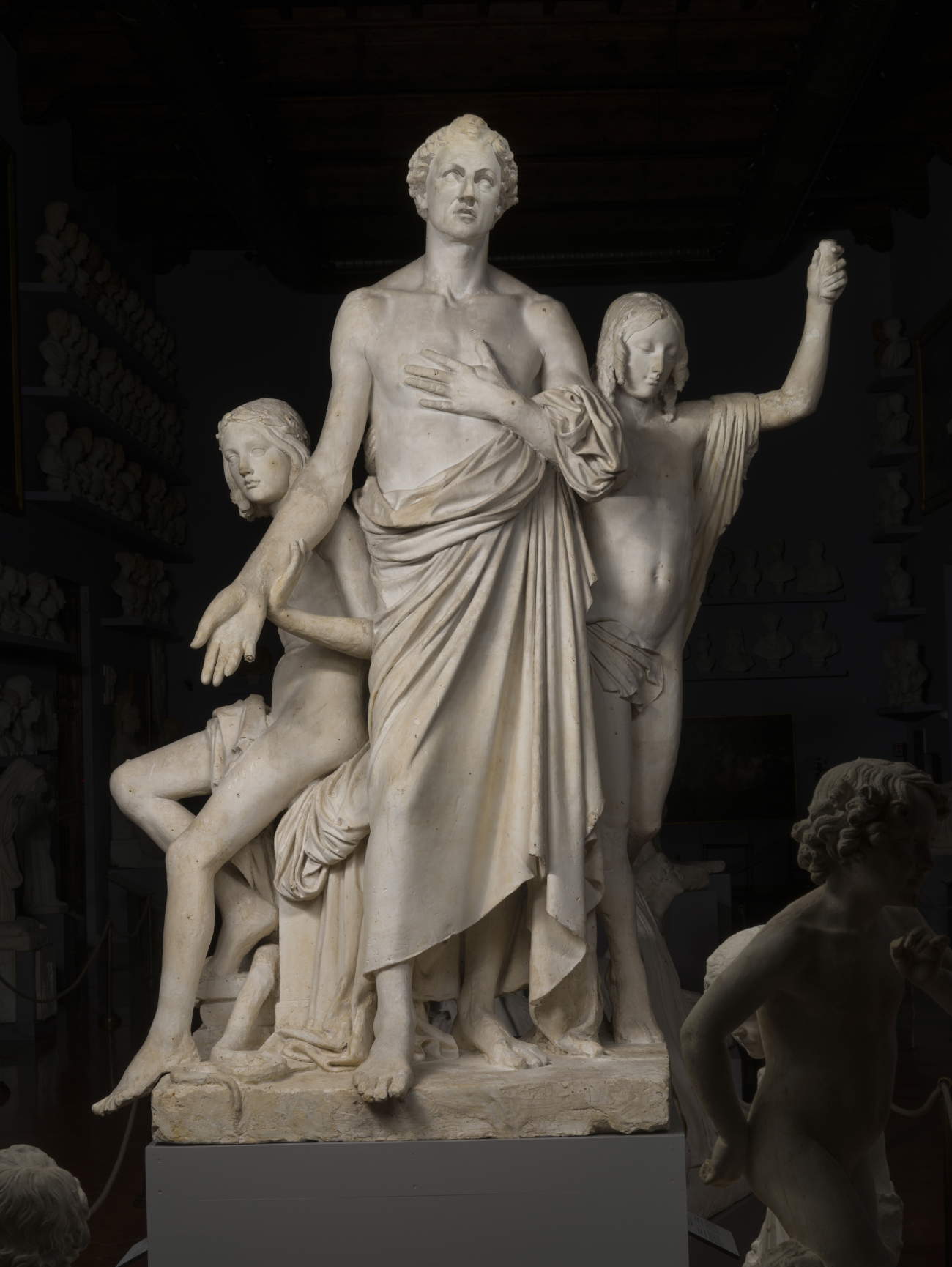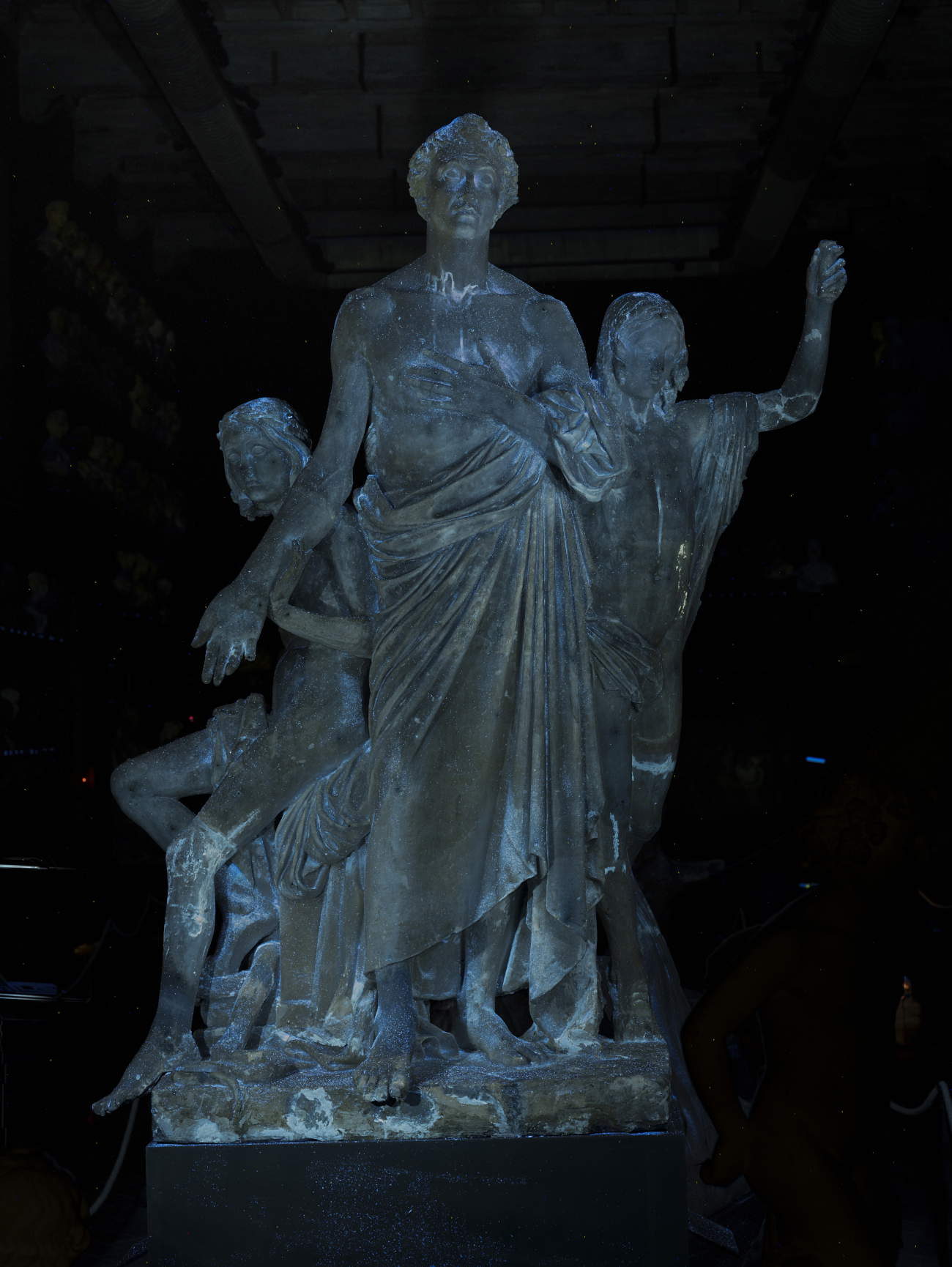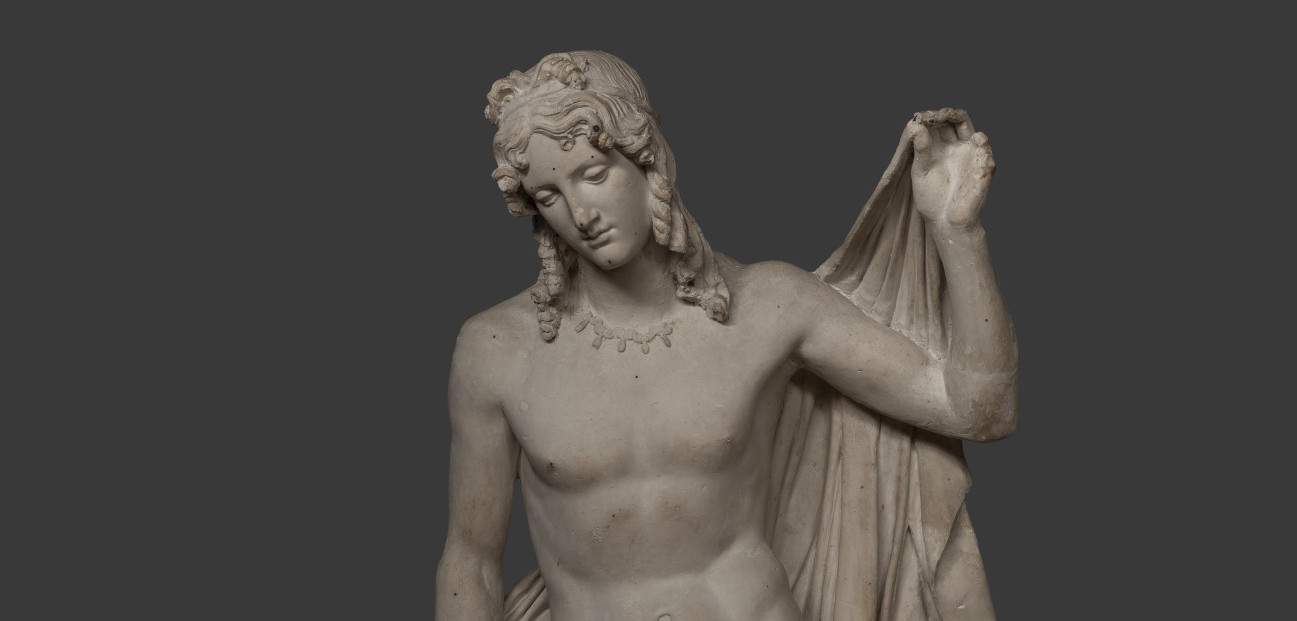Florence's Galleria dell'Accademia launches a project to study Lorenzo Bartolini's plaster models
The Galleria dell’Accademia in Florence, in collaboration with the Soprintendenza Archeologia, Belle Arti e Paesaggio for the metropolitan city of Florence and the provinces of Pistoia and Prato (Sabap) and at the University of Applied Sciences of Southern Switzerland in Mendrisio - SUPSI, has launched a never-before-executed technical-scientific research pilot project that will focus on diagnostic investigations of plaster models by Lorenzo Bartolini (Savignano, 1777 - Florence, 1850), preserved in the Gipsoteca of the Florentine museum.
The goal is to better understand the sculptor’s technique in the transition from plaster to marble, identifying the materials used in the different stages of workmanship and the creative process. This information will also help assess the state of conservation of the works, identifying any critical issues not visible to the naked eye. Since ancient times, sculptors have used clay models to create stone or marble sculptures. Given the perishability of this material, in modern times, in order to preserve the form, a plaster cast of the model was made, and then the final work was transposed, a stage that also allowed artists to work with assistants. The most autograph forms are found in the plaster, since the modeling in clay was usually the work of the artist himself, so comparing the plaster and the finished work, in marble or stone, allows us to accurately document how this step was carried out, identifying the presence of any tangencies or differences between them.
For artists like Lorenzo Bartolini, the plaster model represented the link between the design aspect and the technical aspects of creation. The traces on the plaster surface testify to the stages of the artistic process and provide information about the technical procedures of the atelier, as well as tell the story of the artist’s modus operandi. In addition, on the surface of the models are traces of their conservation history, their vicissitudes and previous restoration work. It should also be remembered that the models are largely hollow and in some cases made with very thin thicknesses of plaster, with plant fibers and cloth mixed into the mixture. Very often inside the projecting parts they have wooden or iron elements. They are polymateric works and require special care in their handling and display.
The Gipsoteca of the Galleria dell’Accademia has a large collection, so significant works, including busts and full-length sculptures, were selected in collaboration with the management, both from a technical and art-historical point of view, and of which there are marble executions in the city. Preliminary information on the context of the works was then gathered by examining archival documents and drawing up a conservation and exhibition history, and then, using grazing and diffuse light and a portable microscope, the surface of the works was analyzed to check their state of preservation and trace previous restoration work. Mapping and careful photographic documentation of UV fluorescence was carried out strictly in the dark.
Each plaster cast was subjected to X-ray surveys at night for safety reasons in order to examine its internal structure and identify any reinforcement. Through XRF measurements, it was possible to know the composition of surface metal elements, such as support brackets and measuring points. 3D scans and modeling were done to relate the plaster casts to the finished marble sculptures. This first phase began in late December 2023, and is still ongoing. All the data, the result of the investigations, research and observations, are being processed. Their final evaluation is scheduled for May. The project was carried out by an international multidisciplinary work team of scientific experts, restorers, art historians and technicians: Cecilie Hollberg, Eleonora Pucci, Graziella Cirri and Elvira Altiero for the Galleria dell’Accademia; Giovanni Nicoli, Elisabeth Manship and Pierre Jaccard for SUPSI; and Alberto Felici for SABAP. Ottaviano Caruso performed the documentation with UV light; Thierry Radelet, the X-rays and XRF; and, Mattia Mercante, the 3D scans.
“After intense conservation work,” says Cecilie Hollberg, director of the Accademia Gallery in Florence. “With the refurbishment of the Gipsoteca and the digitization of all the works included therein, and after the putting online of Lorenzo Bartolini’s complete archive, now usable by all, I am happy to be able to present this new, highly innovative pilot project in collaboration with experts and international institutions, such as SUPSI and Sabap. A research method never before used on the artist’s plaster works, which until now had never been investigated so carefully from a technical and scientific point of view. In short, still a cutting-edge project to learn more about the technical procedures to deepen knowledge about the collections of the Accademia Gallery in Florence and share the results for future studies.”
“This method of investigation,” continues Alberto Felici, restoration officer of the Soprintendenza Archeologia, Belle Arti e Paesaggio for the metropolitan city of Florence and the provinces of Pistoia and Prato (Sabap) and curator of the research project. “has been applied on the plaster casts of the Gipsoteca Museo Vincenzo Vela in Ligornetto, Switzerland with a project financed by the National Research Fund (SNSF), and it would be desirable to apply it also in other Gipsotecas or museum collections in other countries, thus creating a network of exchanges and comparisons, useful both for a greater understanding of the realization of the works themselves and for the formulation of a plan for monitoring the state of conservation.”
“The collaboration with the Academy Gallery and the Superintendency,” says Giacinta Jean lecturer in charge of SUPSI’s conservation and restoration degree program, “has been very important. The analyses carried out on the works in Ligornetto (Switzerland) have given us a better understanding of Vincenzo Vela’s plaster models; with this project we will be able to compare them with the way of working of Lorenzo Bartolini, an artist almost his contemporary. The research that is carried out in SUPSI in the field of cultural heritage is focused on the interdisciplinary study of artistic techniques, with direct observations of the works by those accustomed to reading the subject, integrated with archival research and with scientific support provided by professionals with long experience in this field.”



 |
| Florence's Galleria dell'Accademia launches a project to study Lorenzo Bartolini's plaster models |
Warning: the translation into English of the original Italian article was created using automatic tools. We undertake to review all articles, but we do not guarantee the total absence of inaccuracies in the translation due to the program. You can find the original by clicking on the ITA button. If you find any mistake,please contact us.



























